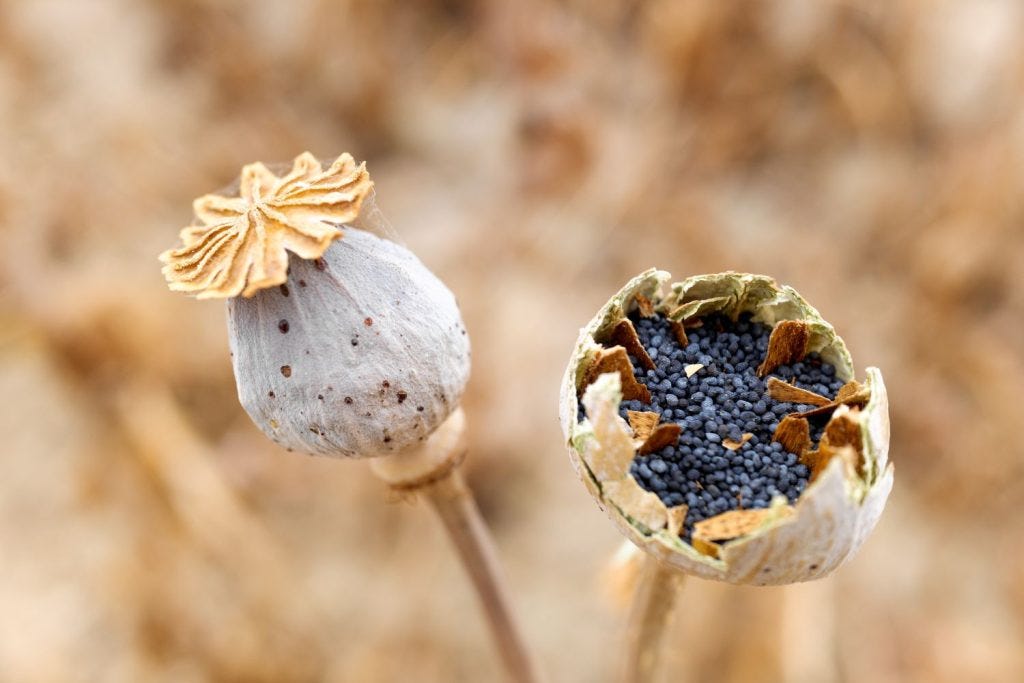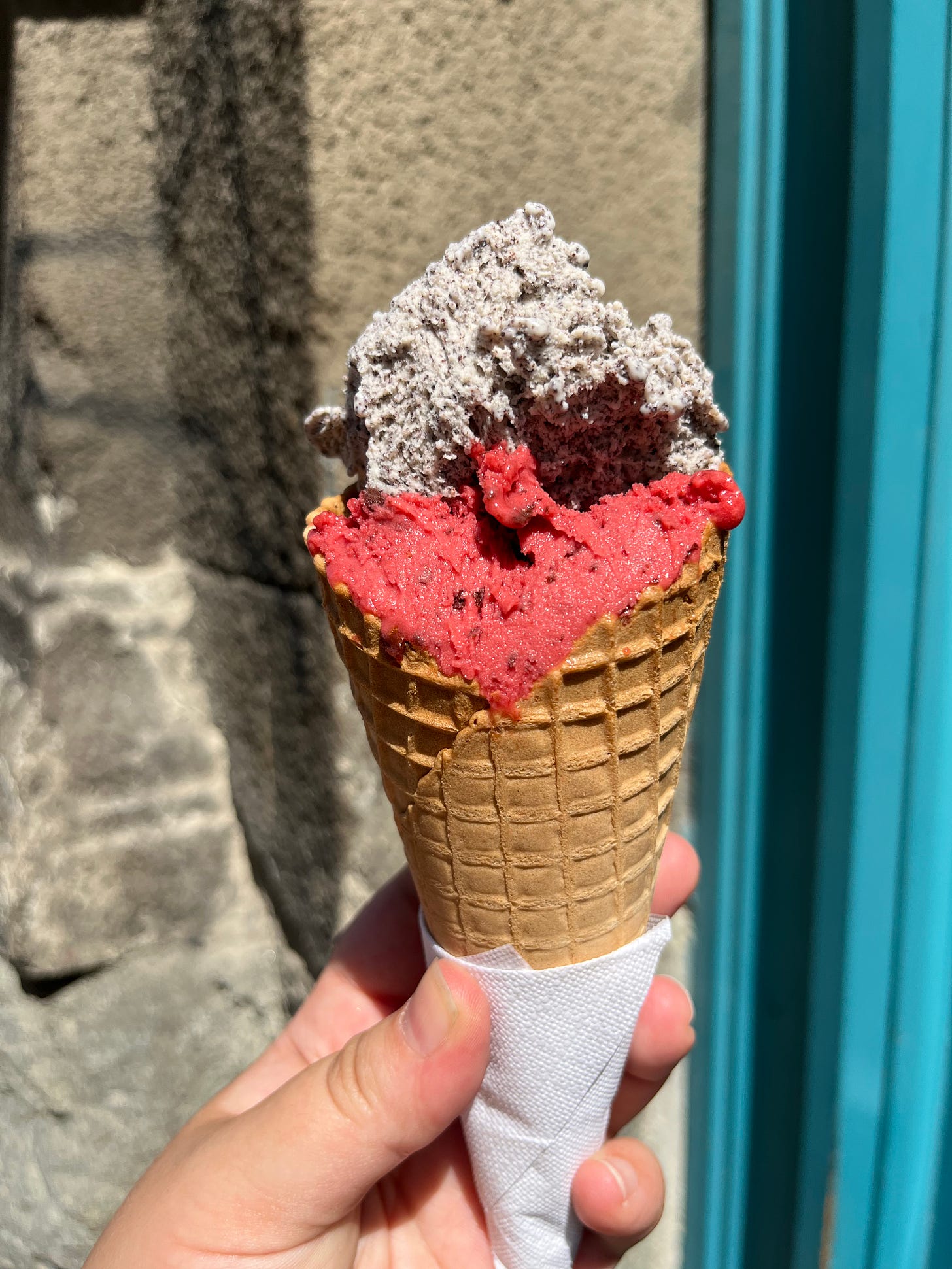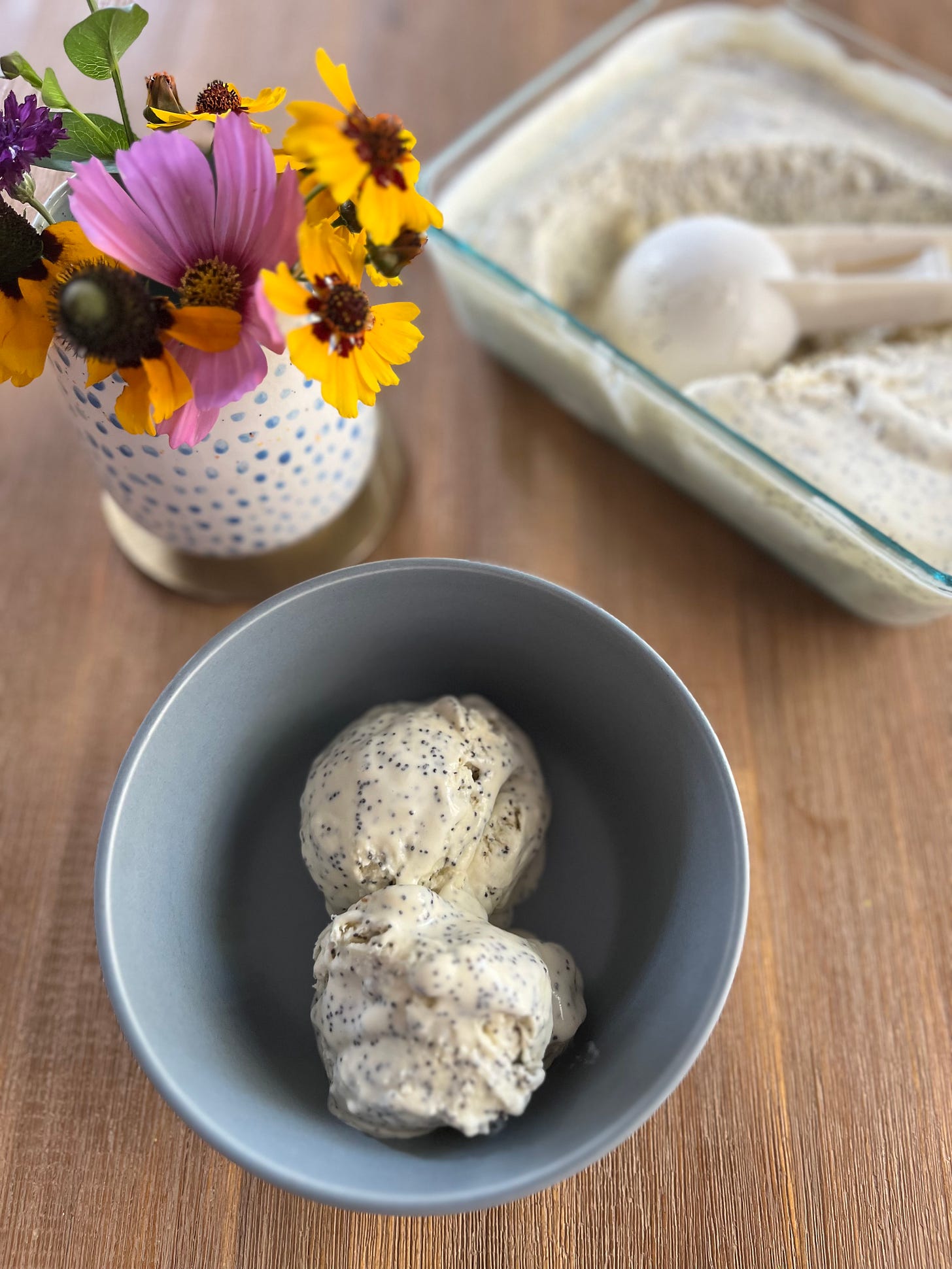Hey there! If you’ve found your way here but are not yet subscribed for the weekly newsletter, you can do that here. You will never miss a recipe or a story, and I’ll be eternally grateful for your support.
When was the last time a photograph stopped you in your tracks?
In the over-saturated, overstimulating world of social media, it takes a lot for an image to make me truly pay attention. But the other day, my friend and fellow food writer Devra Ferst posted a picture of a double-decker ice cream cone that made me audibly gasp. (I was in a coffee shop at the time, so that was a little awkward.)
But just *look* at that gorgeous cone, topped with one scoop of sour cherry chocolate chip gelato and a craggy mountain peak of poppy seed gelato. I was particularly captivated by the poppy seed scoop. Could there be a more wonderful application of the nutty-sweet seeds so beloved in Ashkenazi baking?
Devra told me the ice cream was made in a small shop in Belgrade, which is the capital of Serbia. (She is currently on an Eastern European odyssey, lucky woman.). And while my first instinct was to book a last minute flight to join her, the next best option was to try and recreate it at home.
After testing out 7 ice cream makers over the course of two weeks for a recent review for Forbes, I am an enthusiastic convert to the pleasures of owning a machine that can churn out scoop shop-worthy ice cream in my kitchen. That said, I know that ice cream makers aren’t exactly a common household appliance. And this poppy seed ice cream deserves to be spooned into as many mouths as possible—post haste! So I am thrilled to share my 5-ingredient, no churning necessary take on poppy seed ice cream.
If you are a fan of poppy seed hamantaschen, beigli, or makosh, making this is an absolute no-brainer. But even if you prefer your poppy seeds lightly sprinkled on bagels or challah only, I have a strong sense you will be bewitched by this Poppy Seed Ice Cream just the same. You can find the recipe below. But first, a little poppy seed primer.

The Incredible, Edible Poppy Seed
Poppy seeds have been cultivated for thousands of years across Mediterranean Europe and the Levant. The tiny, dusky blue-black oilseeds (poppy seeds contain more than 40 percent oil) are part of the poppy plant which produces bright red flowers (think The Wizard of Oz). Other varieties of poppy plants sprout white, pink, orange, purple, or yellow blossoms.
The poppy plant is notoriously the primary source of opium which in part explains its success overtime as a cultivated crop. But the non-narcotic seeds have long been used as a culinary ingredient, as has poppy seed oil pressed from the seeds.
Called mohn in Yiddish and mák in many Slavic languages, poppy seeds are widely used in Central and Eastern European kitchens. They flavor cakes and strudels and top savory pastries like bialys and pletzles. They are the traditional filling, along with prune jam, for hamantaschen on Purim and are also used as a flavoring for comfort food dishes, like Hungary’s mákos metélt, noodles with poppy seeds and sugar. According to Gil Marks’ Encyclopedia of Jewish Food, “Lithuanian Jews once made a pareve milk substitute from the oil-rich poppy seeds and water.” Doing the vegan mylk thing before it was cool!
In America, poppy seeds are often associated with Eastern European Jewish cuisine because Ashkenazi Jews (and their love of poppy seed pastries) helped popularize their use here. But in Eastern Europe they are equally beloved by everyone. As Devra told me, “I think of them as being so Jewish but of course they are popular in many non-Jewish homes in this part of Europe.”
And as for their uniquely beguiling flavor? I think these two articles capture it best:
“Their flavor flirts at the edges of animal, vegetable and mineral without making a firm commitment to any of them.” - Kay Rentschler, New York Times, 2002
They taste “like legumes, like fresh peas, like hazelnuts, like flowers. The flavor is a contradiction—floral yet earthy, evanescent yet grounded.” — Gabriella Gershenson, Saveur, 2012
Don’t Forget to Grind Poppy Seeds
While you don’t need an ice cream maker to make this week’s recipe, you do need a spice grinder (or coffee grinder or high powered blender). Traditionally, poppy seeds are pounded in large brass mortar and pestles, but I have never had luck cracking their armor-tough hulls in my own marble mortar and pestle. Unground, poppy seeds still lend intrigue and crunch to dishes. But their bountiful potential exists inside, and grinding them releases their oils and gorgeous flavor.
Please tell me you’ll make this Poppy Seed Ice Cream before summer is over! Or, preferably, this week. (Is today too soon?) And if you want to recreate Devra’s enviable Serbian cone, pair it with a scoop of the 3-ingredient Sweet Cherry Ice Cream I shared in this newsletter two years ago.
Poppy Seed Ice Cream (no churn!)
Serves 6
Keep reading with a 7-day free trial
Subscribe to The Jewish Table to keep reading this post and get 7 days of free access to the full post archives.





